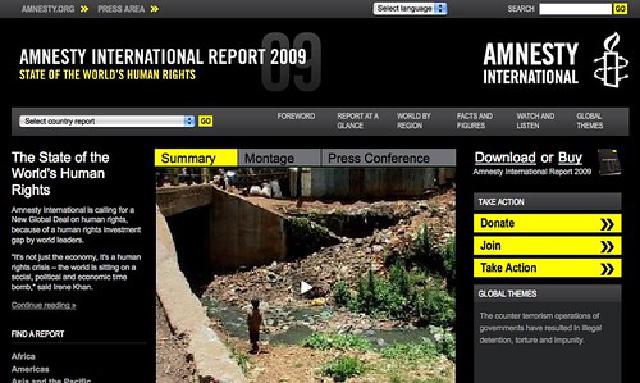The Amnesty International Annual Report 2009

Amnesty International’s Annual Report for 2009 , the definitive report on the state of the world’s human rights is now live.
Pretty smooth sailing technically this time round due to using Drupal (the same CMS we use on the main amnesty.org site and some excellent dev help from the fine, fine folks over at CivicActions (except for a worrying little last-minute technical terror of a bug that slipped through).